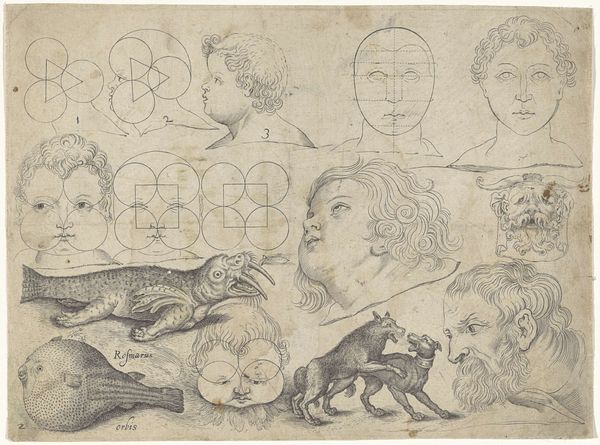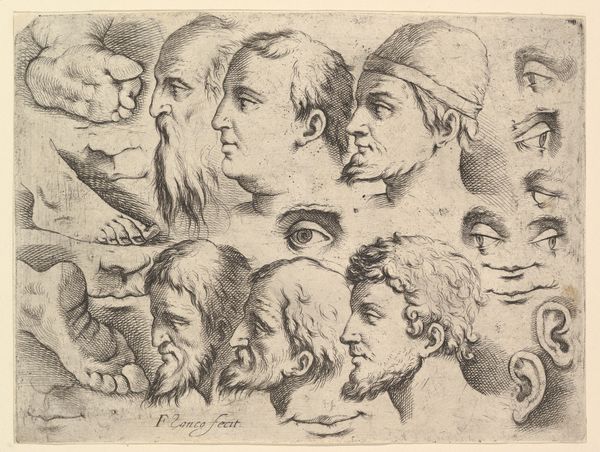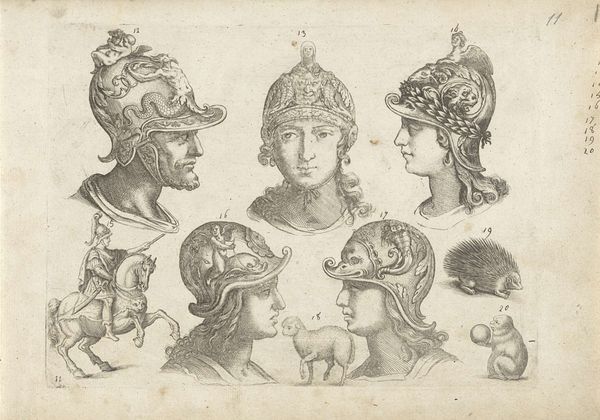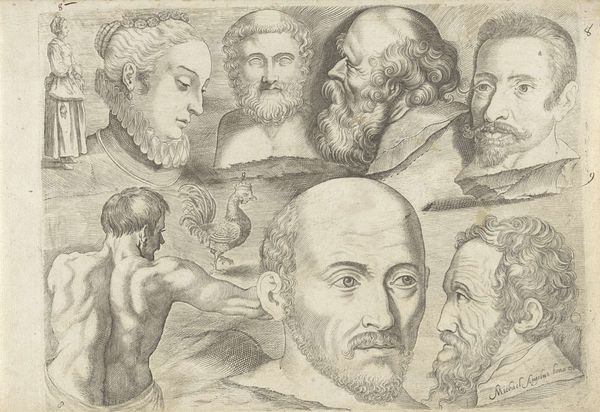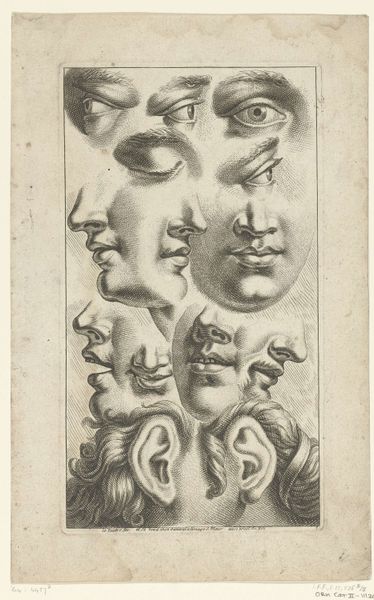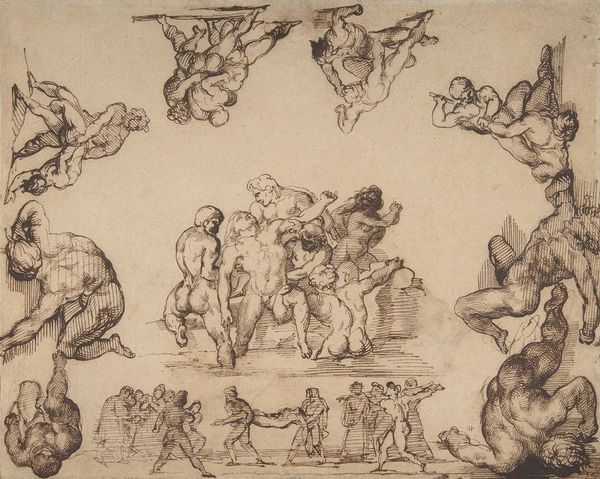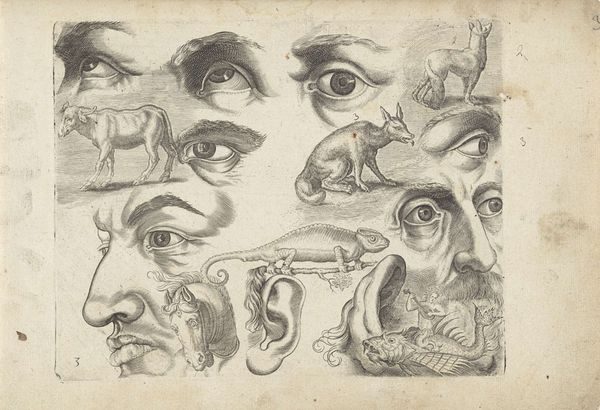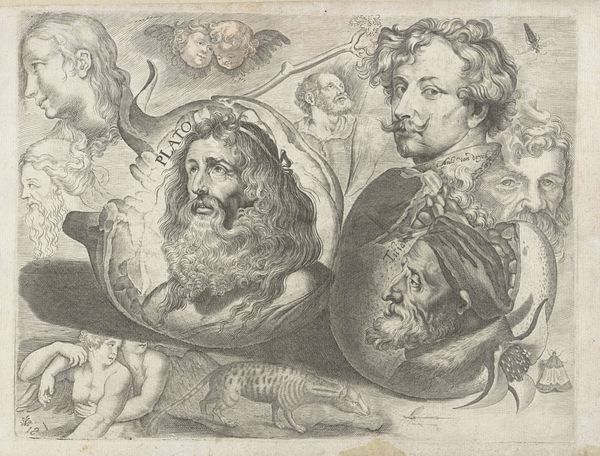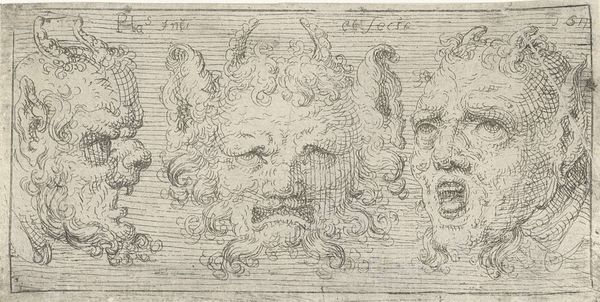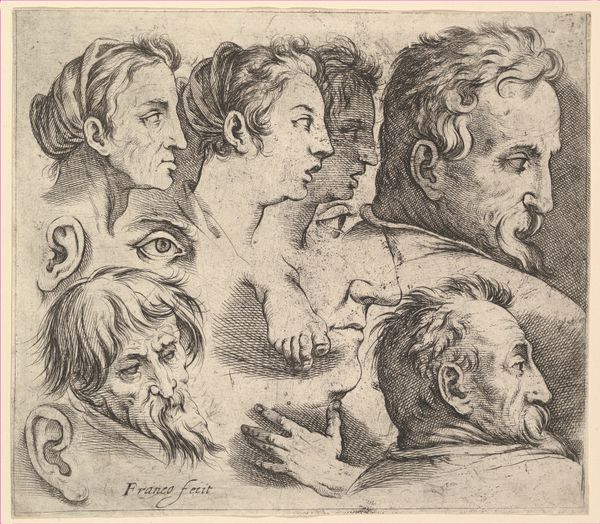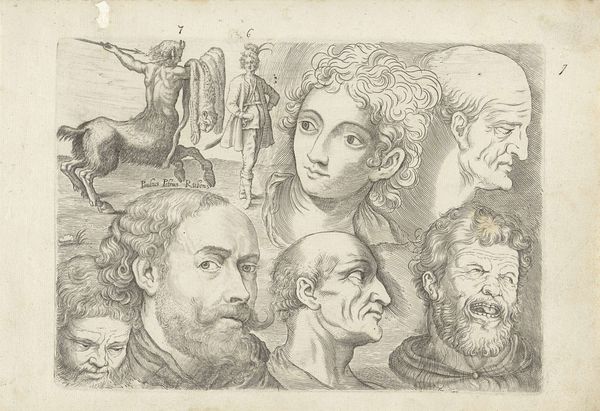
drawing, paper, pencil
#
portrait
#
drawing
#
toned paper
#
light pencil work
#
quirky sketch
#
animal
#
pencil sketch
#
dog
#
sketch book
#
paper
#
11_renaissance
#
personal sketchbook
#
pen-ink sketch
#
pencil
#
sketchbook drawing
#
pencil work
#
northern-renaissance
#
sketchbook art
Dimensions: height 172 mm, width 235 mm
Copyright: Rijks Museum: Open Domain
Curator: This drawing, titled "Studieblad met tekenvoorbeelden: koppen en dieren" or "Study Sheet with Drawing Examples: Heads and Animals," created between 1610 and 1672 by Michael Snijders, features a variety of figures sketched in pencil on paper. What immediately strikes you about this collection? Editor: It feels like a glimpse into the artist's process, like looking at a page torn from a sketchbook. It's interesting how different subjects - human heads, animals, even geometrical figures - are arranged seemingly at random on the sheet. What do you see in this piece? Curator: It is crucial to view this sheet through the lens of material conditions of the time. Paper was not cheap, it was made with considerable labour; its surface bears the trace of the artist's hand as they experimented with line and form, mastering their craft. Look closely. What does this assembly suggest about the training and studio practice of artists during the Renaissance? Editor: It gives the impression of a systematic exercise. Is the toned paper indicative of its purpose as practice, to experiment with lights and shadows perhaps? I see geometrical figures used as a sort of guide… Curator: Precisely. And notice how these elements are intertwined with the drawings. The animal figures—are those real observations or copied from existing prints, thus echoing existing visual models and available materials? The very act of copying and studying demonstrates the exchange and dissemination of artistic ideas within the workshop, an art 'factory' where assistants were key. Editor: So the drawing, the paper itself, all the techniques... these things highlight not just artistic skill but the economic and social conditions in which art was produced. I hadn't thought of it that way before. Curator: Absolutely! This sheet reveals the network of material, labor, and intellectual exchange that underpins artistic creation. Editor: This exploration opened up a broader view for me to contextualize the techniques and skill to a bigger picture. Thank you. Curator: Indeed. Focusing on artistic means can take our study further from personal taste or a biography to understanding a larger social structure, just as an artist's method shapes form and our way to seeing and understanding.
Comments
No comments
Be the first to comment and join the conversation on the ultimate creative platform.
